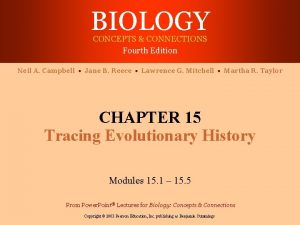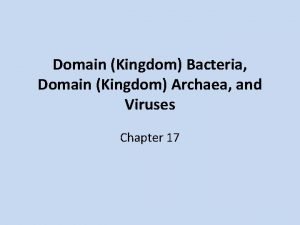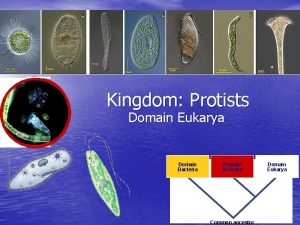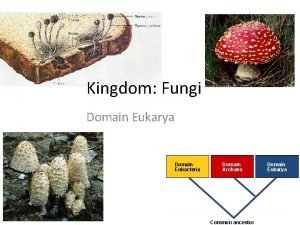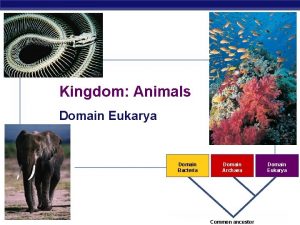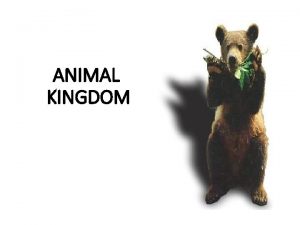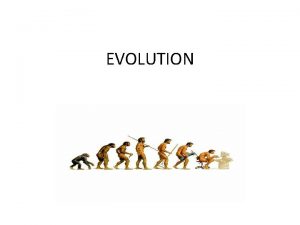Classification and Evolution TaxonomyClassification Domain General Kingdom Kids














- Slides: 14

Classification and Evolution

Taxonomy/Classification • Domain General • Kingdom (Kids) • Phylum (Playing) • Class (Catch) • Order (On) • Family (Freeways) • Genus (Get) • Species (Squished) Very Specific

Binomial nomenclature • • “Scientific Name” Latin (Dead language/never change) Universal Based on Genus (1 st /capitalized) and Species (2 nd /small case) • Ex: Homo sapiens (italic or underlined) • Common name can change with different locations

• Species: individuals of the same kind that can interbreed and produce fertile offspring. • Subspecies: Geographically isolated populations of the same species.

Hybrid • Product of 2 closely related species; often sterile Wolphin Liger Zorse Zony

Vocabulary • Prokaryote: Primitive cells with no membrane bound organelles. • Eukaryote: Complex cells membrane bound organelle. • Autotroph: An organism that manufactures its own organic matter by using energy from the sun. • Heterotroph: An organism that obtains energy from organic matter.

Kingdom Monera • • • Bacteria and blue green algae Prokaryotic cell (no true nucleus) Heterotrophic & Autotrophic – Decay bacteria: heterotrophic – Cyanobacteria: photosynthetic – Bacteria: chemosynthetic Cyanobacteria Chemosynthetic Bacteria

Kingdom Protista • Eukaryotic, single celled – Diatoms and dinoflagellates: photosynthetic – Protozoa: heterotrophic Diatoms Dinoflagellates Protozoa

Kingdom Plantae • Eukaryotic, multicellular, photosynthetic • Flowering plants: marine grass & Mangroves • Macroalgae: Seaweeds Eel Grass Sea Lettuce

Kingdom Fungi • Eukaryotic, multicellular, heterotrophic, absorbs nutrients. – Slime molds, mushrooms Marine Fungi

Kingdom Animalia • Eukaryotic, multicellular, heterotrophic, ingests food. – Whales, dolphins and fish

Homologous structures • Similar structures in different organisms that develop in the same way. – human arm vs. whale flipper vs. bat wing

Analogous structures • Structures in different organisms that have similar functions but develop in different ways. – Insect wing vs. bird wing

More Vocabulary • Natural Selection: the best-adapted individuals will produce more offspring and pass those favorable characteristics on to those offspring. • Evolution: Genetic change over time, that results from natural selection.
 Old kingdom middle kingdom new kingdom
Old kingdom middle kingdom new kingdom Old kingdom middle kingdom new kingdom
Old kingdom middle kingdom new kingdom Old kingdom middle kingdom new kingdom
Old kingdom middle kingdom new kingdom Mentohotep
Mentohotep Domain specific vs domain general
Domain specific vs domain general Domain specific software engineering
Domain specific software engineering Kids r kids west cobb
Kids r kids west cobb Are protists eukaryotic
Are protists eukaryotic Plantae kingdom drawing
Plantae kingdom drawing Eukarya plantae
Eukarya plantae What is the odds and ends kingdom
What is the odds and ends kingdom Algae classification kingdom
Algae classification kingdom 3 domain scheme and 5 kingdom scheme
3 domain scheme and 5 kingdom scheme This is the study of grouping and naming organisms
This is the study of grouping and naming organisms Connecting the concepts evolution
Connecting the concepts evolution














